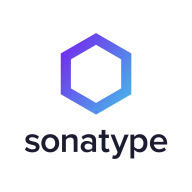

Sonatype Lifecycle and Legit Security are competitive in the software security management domain, each with its own strengths. Sonatype Lifecycle excels in integration capabilities and support across software ecosystems. Legit Security distinguishes itself with a focus on SaaS security and cloud-native adaptability, despite a higher price point.
Features: Sonatype Lifecycle provides robust vulnerability management, automatic policy enforcement, and comprehensive component insights. Legit Security focuses on cloud-native security, continuous monitoring, and real-time risk assessment.
Room for Improvement: Sonatype Lifecycle could enhance its SaaS security features and improve adaptability to agile environments. Legit Security might benefit from expanding its integration capabilities and reducing the false positive rate for secret detection. Both products could enhance user interface intuitiveness.
Ease of Deployment and Customer Service: Sonatype Lifecycle offers a structured deployment process and strong customer support, ideal for established infrastructures. Legit Security supports rapid deployment in modern cloud applications with agile customer service enhancing quick implementation.
Pricing and ROI: Sonatype Lifecycle offers predictable setup costs with solid ROI for long-term projects due to consistent pricing structures. Legit Security may have higher initial costs but provides significant ROI in cloud environments, leveraging its advanced monitoring capabilities, which align well with evolving tech landscapes.


Legit Security provides application security posture management platform that secures application delivery from code to cloud and protects an organization's software supply chain from attack. The platform’s unified application security control plane and automated SDLC discovery and analysis capabilities provide visibility and security control over rapidly changing environments and allow security issues to be prioritized based on context and business criticality to improve security team efficiency and effectiveness.
Sonatype Lifecycle is an open-source security and dependency management software that uses only one tool to automatically find open-source vulnerabilities at every stage of the System Development Life Cycle (SDLC). Users can now minimize security vulnerabilities, permitting organizations to enhance development workflow. Sonatype Lifecycle gives the user complete control over their software supply chain, allowing them to regain wasted time fighting risks in the SDLC. In addition, this software unifies the ability to define rules, actions, and policies that work best for your organizations and teams.
Sonatype Lifecycle allows users to help their teams discover threats before an attack has the chance to take place by examining a database of known vulnerabilities. With continuous monitoring at every stage of the development life cycle, Sonatype Lifecycle enables teams to build secure software. The solution allows users to utilize a complete automated solution within their existing workflows. Once a potential threat is identified, the solution’s policies will automatically rectify it.
Benefits of Open-source Security Monitoring
As cybersecurity attacks are on the rise, organizations are at constant risk for data breaches. Managing your software supply chain gets trickier as your organization grows, leaving many vulnerabilities exposed. With easily accessible source code that can be modified and shared freely, open-source monitoring gives users complete transparency. A community of professionals can inspect open-source code to ensure fewer bugs, and any open-source dependency vulnerability will be detected and fixed rapidly. Users can use open-source security monitoring to avoid attacks through automatic detection of potential threats and rectification immediately and automatically.
Reviews from Real Users
Sonatype Lifecycle software receives high praise from users for many reasons. Among them are the abilities to identify and rectify vulnerabilities at every stage of the SDLC, help with open-source governance, and minimize risk.
Michael E., senior enterprise architect at MIB Group, says "Some of the more profound features include the REST APIs. We tend to make use of those a lot. They also have a plugin for our CI/CD.”
R.S., senior architect at a insurance company, notes “Specifically features that have been good include:
• the email notifications
• the API, which has been good to work with for reporting, because we have some downstream reporting requirements
• that it's been really user-friendly to work with.”
"Its engine itself is most valuable in terms of the way it calculates and decides whether a security vulnerability exists or not. That's the most important thing. Its security is also pretty good, and its listing about the severities is also good," says Subham S., engineering tools and platform manager at BT - British Telecom.
We monitor all Software Supply Chain Security reviews to prevent fraudulent reviews and keep review quality high. We do not post reviews by company employees or direct competitors. We validate each review for authenticity via cross-reference with LinkedIn, and personal follow-up with the reviewer when necessary.